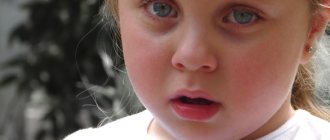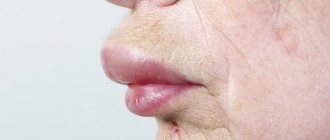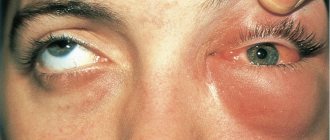Causes
The main cause of seasonal runny nose is an allergic reaction of the nasopharyngeal mucosa to a certain irritant. But it’s worth keeping in mind that it’s not just the flowering time that can cause nasal congestion for allergy sufferers.
Many other factors provoke allergy symptoms.
The list of such reasons may include:
plant pollen; dander and animal hair; components of the cover of insects that live indoors (dust mites, bedbugs, cockroaches); household dust; mold; medicines; food (strawberries, citruses, nuts, eggs, milk); volatile chemicals (in production, construction and painting areas); insecticides and other chemicals for pest control.
An allergist will help you find out the reasons for the appearance of swelling of the nasal mucosa. He prescribes certain tests that will indicate what is causing the allergy.
Particular attention should be directed to parents if the baby has a frequent runny nose for no apparent reason.
Symptoms
Allergic swelling of the nose has certain signs that distinguish it from rhinitis of viral or bacterial etiology. The features of allergic rhinitis are:
occurs quickly after contact with a certain allergen; swelling of the nasal mucosa decreases after the allergen is eliminated; nasal discharge is clear and liquid; itching in the nose can be quite severe; sneezing is possible; nasal breathing is difficult, the patient breathes through the mouth; the patient often rubs the tip of the nose with his palm; performance decreased, swelling of the nasopharynx interferes with sleep.
Another relevant sign that speaks in favor of the allergic nature of the runny nose is atopy.
This term refers to the body’s innate tendency to allergies. This manifests itself in childhood, when the baby develops skin rashes in response to a certain factor. Also in childhood, constipation or diarrhea, a tendency to swelling of the nasopharynx, and often such a child has a stuffy nose can be observed. Such babies are more susceptible to Quincke's edema and allergic urticaria.
Runny nose in infants
Parents often ask how to treat a runny nose in newborns and infants. Evgeniy Komarovsky argues that such babies do not always require treatment as such. If it seems to the mother that the baby is snoring or wheezing in his sleep, this is not always rhinitis. In infants, the nasal passages are very narrow, which makes nasal breathing somewhat difficult. This condition does not require any other help other than creating the correct microclimate in the room, which was mentioned above. You can take your child for walks more often.
If the nose does not breathe, breathes poorly, or mucous discharge appears, it should be remembered that it is the narrowness of the nasal passages in infants that makes it difficult for mucus to flow out, and therefore the risk of developing a bacterial infection is significantly higher in them than in older children. The baby doesn't know how to blow his nose yet. Parents will need to buy an aspirator and help the little one clear the nasal passages of accumulated snot. You can drip salt solutions, give them water and moisturize them too.
If a baby has white snot coming out of his nose, it is mucus mixed with milk or formula. This happens if the child burps unsuccessfully (partially into the nose). There is no need to treat anything in this situation either. Remove white mucus and rinse the nose with saline solution.
Nasal congestion sometimes occurs during teething. In this situation, parents are also required to do the minimum necessary to create normal conditions. There is no point in dripping and treating such a runny nose; as soon as the teeth erupt, the swelling in the area of the nasal passages will subside on its own.
Diagnostics
To diagnose a runny nose of an allergic nature, the doctor prescribes special skin tests. They are performed in a special room, which has an emergency first aid kit as an option if swelling of the throat occurs.
The essence of the methods is to apply certain allergens to artificially made scratches on the skin. By the reaction on the skin one can judge the nature of the swelling of the nasopharyngeal mucosa.

This test is carried out both in adults and in children older than one year, but only outside of exacerbation.
Another relevant method is to determine specific antibodies - immunoglobulins, which give a reaction to one or another allergen. This analysis can be carried out regardless of the period of the disease, during pregnancy and lactation, as well as in a baby up to one year old.
But, despite the countless advantages of this method, it is worth noting the high cost and frequent false results.
Allergies in children: diathesis
Diathesis (Greek διάθεσις - tendency, predisposition) is a condition of a child with a tendency to develop allergic and inflammatory conditions. This is a specific form of allergy in children. Diathesis in infants manifests itself in the form of frequent diaper rash, areas of seborrhea on the scalp, and milky scabs on bright red cheeks. The origin is food, and also in the case of malnutrition of the mother during the prenatal period. Diathesis is not a disease, but a harbinger of the development of diseases: seborrheic dermatitis, eczema, neurodermatitis, psoriasis, etc.
Diathesis often develops in cases of pregnancy toxicosis, various pharmacotherapy during pregnancy, and consumption of potential allergens (nuts, eggs, oranges, honey, etc.).
Treatment of diathesis in infants
The baby receives allergens from the mother's milk, so it is necessary, if possible, to exclude the entry of potential allergens into her body: citrus fruits, honey, etc. (see food allergens). Local treatment (ointments, powders, baths) are only of secondary importance, combating possible complications (scratching, infection)
Treatment
To quickly relieve swelling of the nasopharyngeal mucosa, you should consult a doctor.
He will conduct a diagnosis, rule out the infectious nature of the runny nose and prescribe a specific treatment for the disease.
Vasoconstrictor drops
Experienced allergy sufferers often, without even consulting a doctor, prescribe treatment for themselves in the form of vasoconstrictor drops.
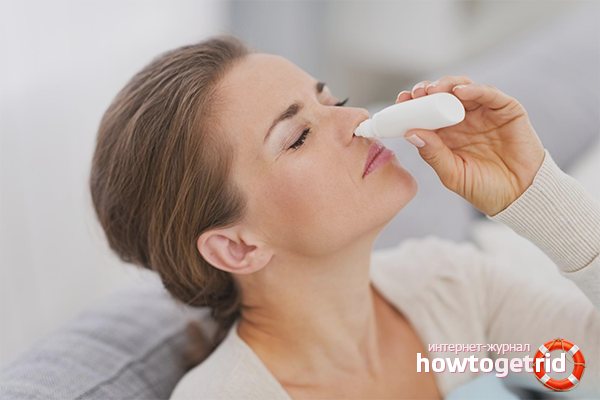
Indeed, these drugs are incredibly helpful for rhinitis: the release of water from the vessels of the nasal mucosa is reduced, which helps relieve swelling. But the use of such drops is strictly limited in time, since long-term use can provoke vasomotor rhinitis. This is especially important when treating a child.
Of the modern drugs in this group, it is worth noting Xylometazoline, the use of which can be slightly extended (up to 1.5 weeks), Intersen and Tizin, which maintain their effect for a long time.
Treatment of the baby with these products begins in the latter cases, when swelling of the mucous membrane interferes with normal sleep.
To relieve the symptoms of a runny nose, small children (from one year old) are prescribed Nazol baby.
Antihistamines
Antihistamines will be effective for any manifestation of an allergic reaction, including when the nose is stuffy. They eliminate the body's reaction to the allergen by suppressing the release of histamine from mast cells. Taking these medications will make you feel great, without getting used to the medication. Healing even for a baby will be safe with these remedies.
Medicines of this group;
Cetrin; Suprastin; Fencarol; Claritin; Zodak; Zyrtec.
For children from this group of drugs, sodium cromoglycate is suitable.
This product is available in the form of a nasal spray or drops. This product will be able to completely relieve swelling of the nasopharynx after 5 or more days, so you should not stop using it after days of use if your nose is still stuffy.
Hormones
If the nose is stuffy due to allergies, hormonal products are resorted to only as a last resort. Healing with this group of remedies remains in reserve with the doctor until other methods have been tried, but the swelling has not been removed.
Corticosteroids are very effective when the nose is stuffy, relieve swelling, stabilize the membranes of mast cells, as well as cells of the vascular wall.
This group includes the following nasal sprays:
Nasobek; Flixonase; Nasonex; Beconase; Nazarel.
Immunotherapy
Immunotherapy refers to the development of immunity (tolerance) towards an allergen. This can be achieved by introducing small doses of the allergen into the body. The dose increases evenly, and the body responds less and less to this substance with a violent reaction. This is carried out in a hospital setting; this procedure is undesirable for small children.
Diet
Treatment of allergies of any kind cannot be achieved without diet.

If a person is prone to allergic reactions (atopy), then he should avoid products that can stimulate the release of histamine, or are themselves rich in this substance.
Therefore, it is extremely important for allergy sufferers to exclude these products from their diet. These food products include:
smoked meats; meat and fish preservatives; fresh tuna, salmon, herring, sardines; sausages (especially salami); pickled and salted foods; French cheeses; wines.
As can be seen from the list, having excluded all these products, a person may not even notice their absence in his own diet.
And the health effects will be undeniable.
If a person has had a stuffy nose for a long time, then it is worth considering a possible allergic reaction to a certain irritant, for which treatment is prescribed by an allergist.
In the event that you have a runny nose, especially if it is mixed with pain and sore throat, malaise, a slight increase in temperature to subfebrile levels, and even if, in addition, you wet your feet the day before, then everything is clear: most likely, you have a cold or ARVI is an acute respiratory viral infection. It proceeds according to all known laws: “a treated runny nose lasts a week, and an untreated runny nose lasts seven days.”
But what can cause swelling of the nasal mucosa without a runny nose and how does this unpleasant set of sensations manifest?

In the first place is an allergic reaction. Specifically, allergic swelling of the nasal mucosa can cause even more unpleasant feelings than an ordinary cold. What symptoms would suggest this manifestation of an allergy, and what could happen after the swelling?
Swelling of the nose in a child: how to relieve and get rid of the problem
The baby's nose guards the entire body.
The mucous membrane protects it from the influence of viruses and allergens.
She takes the hit first.
When an irritant hits the mucous membrane, a rapid flow of blood begins to flow to it, and special substances are produced that provoke swelling.
This problem requires a responsible attitude on the part of parents, whose task is to identify and cure the problem in a timely manner.
Causes of childhood suffering
The causes of severe swelling of the nasal mucosa in a child are different:
- allergic: exposure to allergens on the mucous membrane;
- infectious: bacterial and viral origin;
- acquired: the appearance of tumors in the nose and herniation of the brain;
- traumatic: after surgery or injury to the nose;
- congenital: curvature of the nasal septum, pathological narrowing of the nasal passage.
Having established the root cause of swelling of the bridge of the nose and mucous membrane, it is possible to correctly prescribe treatment and significantly make the child’s life easier.
We identify the problem on time
Despite the fact that the causes of swelling in a child are very diverse, the symptoms of its occurrence are always the same:
- mucus secretion;
- labored breathing;
- decreased or loss of sense of smell;
- signs of nasal congestion;
- the appearance of dryness and burning in the nose.
If the cause of swelling is an infection, the main local symptoms are accompanied by signs of intoxication of the body: headache, elevated body temperature, weakness. With allergic edema, the eyes turn red, the throat gets sore, and clear mucous discharge appears. With severe symptoms, swelling is visible externally.
The photo shows swelling of the nasal mucosa:
Although swelling inside the nose itself does not pose a direct threat, the symptoms cause a lot of trouble. The younger the child, the more difficult it is for him to tolerate nasal swelling and the inability to breathe properly.
Due to the specifics of their development, young children cannot breathe fully through their mouths. When congested, they become lethargic and cry a lot. Infants may stop breathing. Long-term inability to breathe through the nose in older children leads to frequent acute respiratory viral infections, the development of sinusitis, and even hearing loss.
Therefore, it is important to monitor the cleanliness of the child’s nose and immediately take measures to combat congestion.
Let's find out the opinion of Dr. Komarovsky
Evgeny Olegovich Komarovsky is a famous doctor of our time. Many parents listen to his advice. In the series of programs, Komarovsky talks a lot about the proper care and treatment of children, including how and with what to relieve severe swelling of the children’s nasal mucosa.
He advises, first of all, to rinse the nose to remove dried mucus and crusts. A regular saline solution works best for this task. It is not necessary to buy ready-made bottles with an expensive drug at the pharmacy. This solution can be made at home in any kitchen.
After washing, it is necessary to create suitable conditions for the child. To do this, you need to give fluids to drink often and a lot: water, compotes, teas.
It is imperative to monitor the freshness and humidity of the air. It is extremely important to carry out regular ventilation. If possible, it is necessary to reduce the room temperature to 19-20 degrees. With the right approach to the problem of congestion, the child quickly recovers.
If the simplest techniques do not bring the desired relief, you can use vasoconstrictor drops. But it should be remembered that they have a short-term effect and should not be used longer than 5 days.
If congestion is caused by an allergy, Evgeniy Olegovich strongly recommends protecting the child from the allergen, giving him a hypoallergenic diet, and monitoring the air humidity and temperature in the room.
In case of prolonged swelling, Komarovsky advises contacting an ENT specialist and undergoing an examination.
Safe and effective treatment
Treatment depends on why your child has a swollen nose.
Nasal drops
Several groups of nasal drops have been developed, the main ones being:
- Vasoconstrictors. The action is aimed at narrowing the blood vessels of the mucous membrane, relieving swelling, but they do not eliminate the cause of the disease. Used for no more than a week, it is important to carefully read the instructions before starting use.
- Antiseptic. In case of acute viral infections, antiseptic drops do their job well. Cleanse the mucous membrane of viruses. A common remedy is Miramistin spray.
- Antibacterial. Used for bacterial attack of the mucous membrane. These drops include: Sofradex, Polydex.
- Antihistamines. Prescribed for swelling due to allergies.
Before using any drops, it is necessary to rinse your nose from possible crusts, mucus and dust so that the medicine reaches the surface of the mucous membrane as much as possible.
Sometimes, against the background of a viral disease, a bacterial infection will join, then antibiotic drugs come into play. Only a doctor can correctly calculate the dosage and select the right drug for a specific case.
Glucocorticosteroids
Children are prescribed only when it is not possible to cope with swelling with other drugs. There is no need to deviate from the dosage and course of use prescribed by your doctor.
Washing
Nasal rinsing is the most important point for the prevention and treatment of children's noses. Pharmacies offer many salt formulations from different manufacturers. They can be found in the form of drops and sprays, with a wide variety of excipients.
You can make saline solutions yourself; this does not reduce their effectiveness. To prepare, you need to dilute 1 teaspoon of salt in a liter of boiled water.
Rinsing with such solutions is used regardless of the cause of the swelling. If the first symptoms of a viral infection appear, the solution washes viruses out of the nose, softens the crusts, and rinses away mucous secretions. With the allergic nature of the edema, allergens that have entered the mucous membrane are washed away.
In case of bacterial complications, it is important to maintain nasal hygiene to avoid even greater complications. In such cases, the salt composition washes away the mucus, preventing it from stagnating in the sinuses.
If the cause of nasal swelling is an injury or foreign body, you should not use a solution with salt. If the nose is injured, it is necessary to put cold on the site of the injury and let the child lie down. If your baby puts something in his nose, you should consult a doctor as soon as possible.
Carrying out inhalations to reduce swelling has proven itself on the positive side. If previously steam inhalations with infusions of medicinal herbs were used, now nebulizers have appeared in our arsenal. With their help, it became possible to carry out the procedure even on the youngest patients.
You cannot pour herbal solutions into nebulizers: this can cause them to break. Oil inhalations are also prohibited in such devices. For the treatment of children, their use is extremely undesirable due to the risk of developing “oil pneumonia”.
Special preparations are best suited for inhalation. During the procedure, small particles of the drug penetrate the mucous membrane, eliminate the cause and moisturize the nose.
Inhalations should be carried out by adhering to a number of simple rules:
- Before the procedure, you need to rinse the nose with a solution of salt.
- During the procedure you cannot speak, you must breathe evenly and calmly.
- Strictly adhere to the allotted time and follow the recommendations from the instructions for the medicine.
- During inhalation, you should not hover your feet or wrap yourself up.
- Afterwards you can’t go outside for at least an hour.
- One hour before the procedure and two hours after, you should not eat or drink anything.
- Monitor minimal effects on other tissues of the body.
Inhalations have a number of contraindications:
- tumors and cysts;
- heat;
- nosebleeds;
- purulent bacterial complications.
The best remedy for viral edema is moisturizing inhalation with saline or soda solution. Only non-carbonated mineral water is used. Such inhalations can be used by everyone for a long time.
Medicines for procedures are prescribed by a doctor. These could be antiseptics. They have broad antibacterial and antifungal properties. Used to disinfect the nasal cavity.
Antibiotics are used very carefully and only in extreme cases. Hormonal drugs are used for moderate and severe forms of allergies.
Inhalations with hormonal medications are done only with compression nebulizers.
Protecting babies through prevention
Swelling inside the nose is easier to prevent than to treat. There are several simple preventative rules that parents can teach their child to:
- Avoid contact of allergens with mucous membranes.
- Do not use vasoconstrictor drops for more than 5 days.
- Rinse your nose regularly with a solution of sea or regular salt. This is especially true in places where large numbers of people gather, when visiting hospitals and during epidemics.
- Strengthening the immune system. Lead a healthy lifestyle, carry out regular hardening procedures, and adequate physical activity. Follow a routine and eat well. Take frequent and long walks in the fresh air.
Edema is an insidious symptom. An experienced doctor will explain to caring parents how to remove its cause, symptoms and alleviate the child’s condition.
We recommend other articles on the topic
Source: https://allergia.life/simptomy/organy-dyxaniya/otek-nosa-u-rebenka.html
Signs
Signs of hyperemia of the mucous membrane of the nasal passages and turbinates caused by the ingestion of an allergen are extremely characteristic and boil down to the following:
difficulty in nasal breathing, which occurred in the middle of full health; the appearance of unpleasant feelings in the mucous membrane, reminiscent of burning, rawness, feelings reminiscent of “frayed mucous membrane”; copious discharge of clear liquid discharge from the nose is added, which does not resemble ordinary thick mucus.
This process is called allergic rhinorrhea; “visible signs” of an allergy occur. The nose becomes reddish, swollen, swelling can spread to the lips and eyes.
As a rule, this limits the manifestations of nasal swelling, in the event that the penetration of the allergen remains local, and it was “managed to neutralize it” and not be allowed further.
If the increase in symptoms continues, then severe signs of generalization of allergic inflammation appear, which confirm the entry of allergens into the blood: urticaria, which is intensely itchy papules, pale porcelain in color, with a tendency to merge, unbearable itching of the skin, difficulty breathing (bronchospasm) , and progressive suffocation.
When the first similar signs appear, you need to call an ambulance without delay.
In the event that the allergic reaction is limited to reactive rhinitis, then there is a strong possibility that these symptoms can be stopped without the help of others.
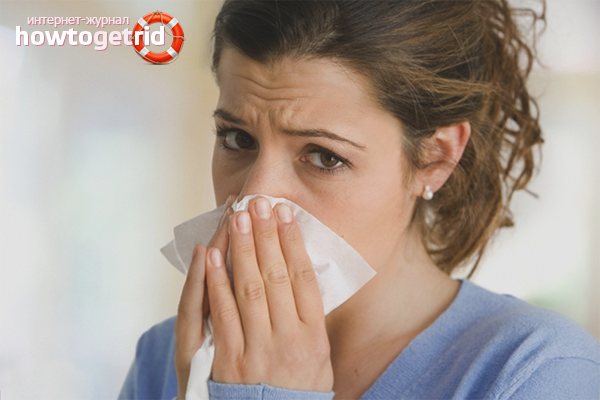
Naturally, for this, a person who has a tendency to such sudden manifestations needs to constantly carry with him a “mini first aid kit”, which can interrupt the unpleasant symptoms.
Symptoms and diagnosis of allergies
Manifestations of allergies can be general and local.
- Local Allergic rhinitis (swollen red nose, swelling, discharge)
- Allergic conjunctivitis (tears, red eyes)
- Bronchospasm (difficulty wheezing)
- Allergic otitis media (edema, hearing loss)
- Allergic dermatitis (skin redness, rash, itching). Its variants: contact dermatitis, urticaria, eczema
Causes of swelling of the nasal mucosa
Symptoms of allergic swelling of the nasal mucosa.
Severe swelling of the nasal mucosa occurs because plethora and hyperemia of the mucous membrane, caused by the release of biogenic amines from mast cells, especially highly active histamine, force the mucous membrane to actively secrete a liquid secretion containing certain types of immunoglobulins to bind allergic antigens.
Of course, allergens can enter the body in different ways.
But each route of introduction of foreign compounds into the body tends to leave its own “characteristic imprints.”
So, for example, contact allergens (animal hair) when playing with them most often cause redness of the skin, itching and hives.
The food route of introduction of allergens, first of all, involves the contact of allergens with the mucous membrane of the oral cavity, pharynx, alimentary tract, and their entry into the blood. This contributes to the manifestation of swelling of the mouth, throat, and countless signs of the body's reaction.
As for reactive rhinitis, most often the prerequisite is the ingestion of allergens with inhaled air - the respiratory route of entry.
The most common causes of allergic rhinorrhea are:
pollen of plants during the flowering season of certain trees, shrubs, grasses; poplar fluff.
Its role is even more sophisticated, apart from allergic rhinitis, it simply tickles the nose and gets into the eyes, which causes conjunctivitis and similar swelling of the mucous membrane of the eye, lacrimation and other unpleasant symptoms; perfume compositions: powders, colognes, perfumes. Together with swelling of the nasal mucosa, even the most expensive and unique “haute couture” perfumes, and not just fakes, can cause bronchospasm and suffocation; a huge arsenal of household chemicals: homemade air fresheners, deodorants, bleaches, laundry detergents, and almost all other substances.
In addition, in almost everyone, ordinary chemical substances that irritate the trigeminal nerve have a pronounced allergic effect.
Trigeminal and olfactory scents
Diagnosis of allergic swelling of the nasal mucosa.
This needs to be discussed separately: there are smells that we distinguish with the first pair of cranial nerves (olfactory nerve).
Most of them. These are “real smells”: the smells of roses, lilacs, jasmine, fried fish, dogs, rotten meat, fresh paint and thousands of other flowers. These can be pleasant and unpleasant, powerful and weak odors.
If a person has lost his sense of smell due to injury, this world of smells is closed to him.
But there are odors that are not smelled, but are felt by the rest of the nerve - the trigeminal, because it also innervates the mucous membrane of the nasal passages and turbinates. And these smells are of caustic chemicals: ammonia, chlorine, formaldehyde, concentrated acids, perhydrol.
It is precisely such smells that cause rhinorrhea and a feeling of “acridity” in the nose, even if a person has no sense of smell.
Therefore, when an “allergie” appears when diluting hair dye, you need to think: maybe this is just a smooth reaction of the sensitive mucous membrane to a caustic substance?
It is enough to ventilate the room where hair coloring is done well, and all the symptoms of allergic rhinitis may leave you and not return.
Treatment of viral runny nose
Viral rhinitis is the most common among children and does not require treatment as such. The mucus produced by the membranes of the nose contains special substances that are very important for fighting the virus that has entered the body. However, the beneficial properties of mucus will end immediately after the snot becomes thick. As long as they flow, everything is fine, parents can calm down.
But if suddenly the nasal mucus thickens, becomes green, yellow, yellow-green, purulent, purulent with impurities of blood, it ceases to be a “fighter” against the virus and becomes an excellent breeding ground for bacteria. This is how a bacterial runny nose begins, which will require treatment with antibiotics.
Thus, with a viral runny nose, the main task of parents is to prevent the mucus in the nose from drying out. The snot should remain liquid. That’s why Evgeniy Komarovsky recommends not looking for pharmacy magic nose drops, because there are no cures for viruses, but simply rinsing the child’s nasal cavity with saline solutions, and doing this as often as possible (at least every half hour). To prepare the solution, you need to take a teaspoon of salt per liter container of boiled chilled water. The resulting solution can be dripped, washed out of the nose using a disposable syringe without a needle, or sprayed with a special bottle.
For instillation, you can use other means that help thin the nasal mucus - “Pinosol”, “Ectericide”. Washing with the most common saline solution, which can be bought inexpensively at any pharmacy, effectively thins snot.
The drying out of nasal mucus, which is so necessary during the body’s fight against viruses, is facilitated by stuffy and dry air in the room and the lack of a sufficient amount of fluid in the body. Therefore, the room where a child with a runny nose is located should be ventilated and wet cleaned. The air must be humidified to 50-70% . Special devices - humidifiers - will help parents with this. If there is no such miracle of technology in the family, you can place basins of water in the corners of the room so that it can evaporate freely, hang wet towels on the radiators and make sure that they do not dry out. A child who often suffers from rhinitis should definitely be given an aquarium with fish.
On the heating radiators in Dad’s room, you need to install special valves that can be used to regulate the air temperature during the heating season. The air temperature in the children's room should be 18-20 degrees (all year round).
During treatment of a viral infection, the child must drink . But not syrups and mixtures from the pharmacy, but tea, compote of dried fruits or fresh berries, fruit drinks, regular drinking water. The drinking regime should be plentiful; the mother should serve all drinks to the child warm, but not hot, preferably at room temperature. Such a drink is absorbed faster into the body, and the likelihood of drying out the mucous membranes is significantly reduced.
How to treat swelling of the nasal mucosa
How to relieve swelling of the nasal mucosa of an allergic nature?
Before this, as in other options, it is necessary to stop contact with the allergen. After this, you need to take medications that help reduce secretion. These medications are over-the-counter medications and can be purchased at any pharmacy.
In the event that the nasal mucosa swells for the first time, then we are not entirely sure what kind of allergen could cause this reaction. Therefore, it is necessary to especially carefully “rummage through your memory” and put everything “on the shelves”, or better yet, write it down in order to compare all the facts the next time.
It is immediately necessary to understand what means should not be used to relieve allergic swelling.
The fact that they help with colds does not mean at all that they will be able to help with allergies:
It is strictly forbidden to start dripping medicine into the nose, just as, without understanding it, you can try to “kill a cold in the bud”; it is forbidden to inhale and sniff phytoncides and essential oils. In conditions of hyperreactivity of the respiratory system, those compositions that made breathing easier during a cold can be harmful and even lead to bronchospasm: essential oils of mint, lemon, eucalyptus, juniper, pine, onion, garlic, golden star balm; it is forbidden to breathe over potatoes, and carry out inhalations over hot steam, since high temperatures can increase the manifestation of edema.
What to do and how to make breathing easier for yourself?
Drugs that relieve swelling of the nasal mucosa
It is clear what not to do.
How to cure swelling of the nasal mucosa that is allergic in nature?
drops for swelling of the nasal mucosa are special antiallergic drugs that reduce the secretion of histamine; their active ingredients are classified as histamine receptor blockers: Allergodil, Cromohexal, Tizin Allergy. They can be used at the first signs of swelling of the mucous membrane. Moreover, if you accidentally mixed them up and dropped them into your nose when you have a cold, then you will not make it worse for yourself because you used the product for other purposes; a very good compromise between pharmaceutical and preventive products are products containing sea water: “Aquamaris ", "Dolphin", "Saline".
They can be instilled to wash out mucus and relieve swelling, without fear of side parameters that are absent; adrenergic agonists and anticongestants.
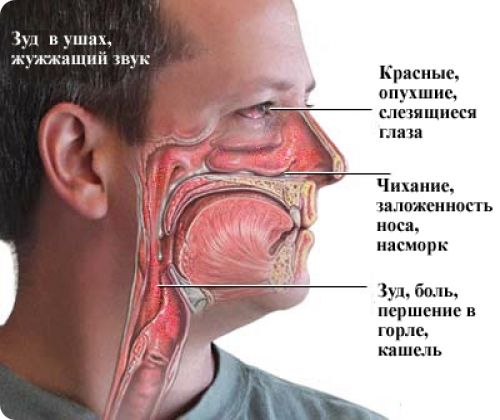
Drugs that relieve swelling of the nasal mucosa of this group are widely known to us: they include the well-known naphthyzine, which is a rather rough and old product, which, although it has a short-term effect of improving nasal breathing, but, with prolonged abuse, causes acquired vasospasm, and, on the contrary, it leads to breathing problems. Modern drugs of this group for us are “Dlyanos” (xylometazoline), “Nazivin”.
In severe cases, with widespread and persistent swelling, you can use local hormonal products, which will certainly relieve inflammation, and at the same time will not have a systemic effect - they will not be absorbed into the blood.
But they must still be used as prescribed by the treating doctor. These products include “Aldecin”, “Beconase”, “Nasobek”.
What does Dr. Komarovsky say about a runny nose?
Komarovsky argues that treatment of a runny nose of a viral nature should occur, contrary to generally accepted opinion, without the use of antiviral drugs. He advises using these remedies in extreme cases, for example, with the flu or the threat of herpes. ARVI can generally be cured with topical medications.
We recommend: Lymph nodes in the abdominal cavity in a child
Seawater-based sprays or nasal drops can be used as mucus thinners. It is good to use saline solutions. You just need to prepare them fresh every day; you should not store such medicines even for several hours, as their effectiveness is sharply reduced.

